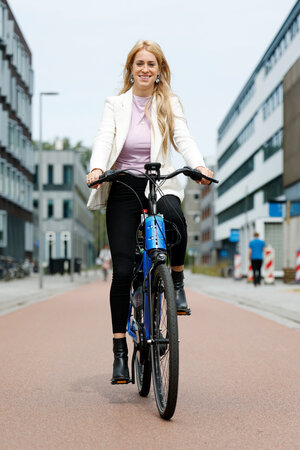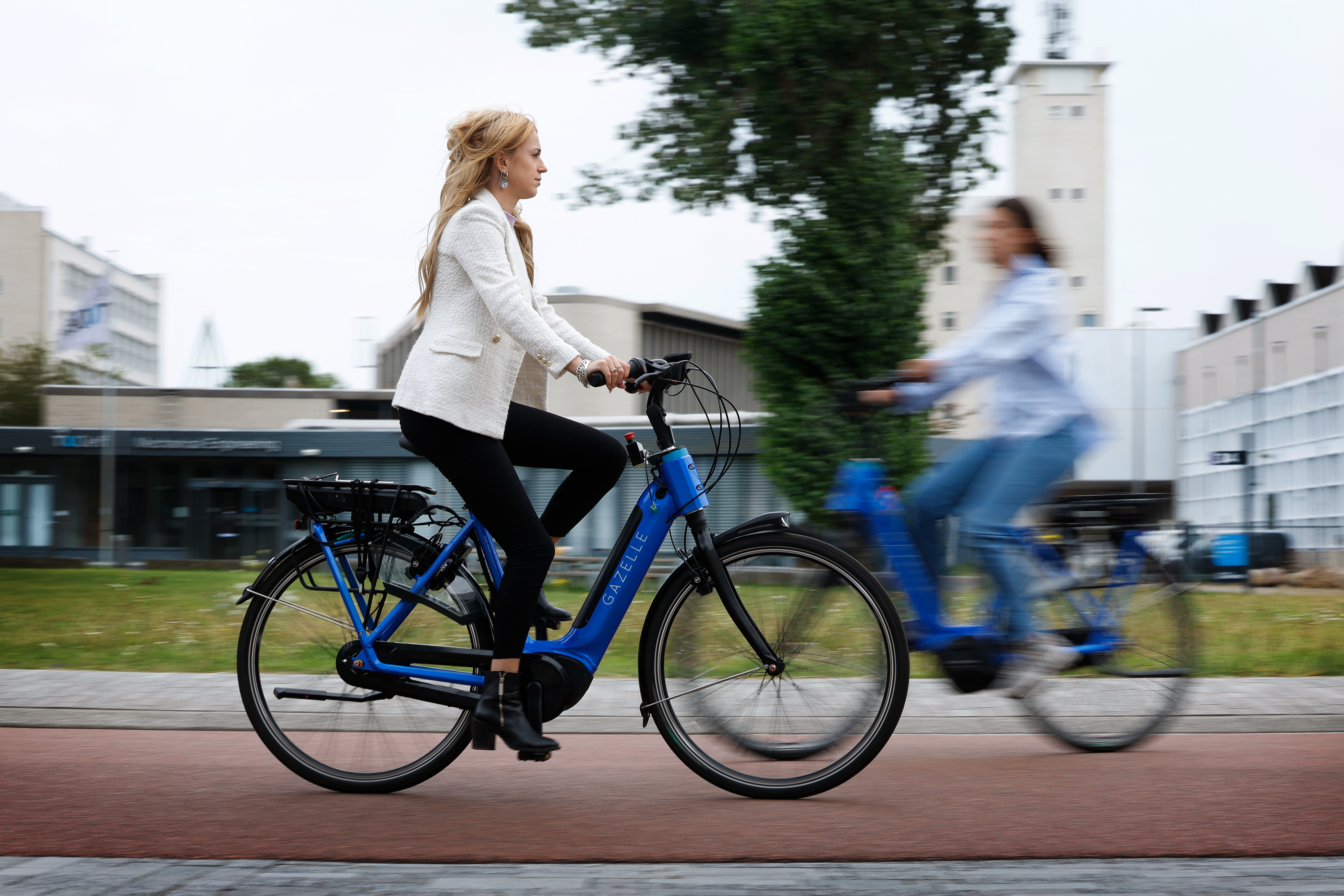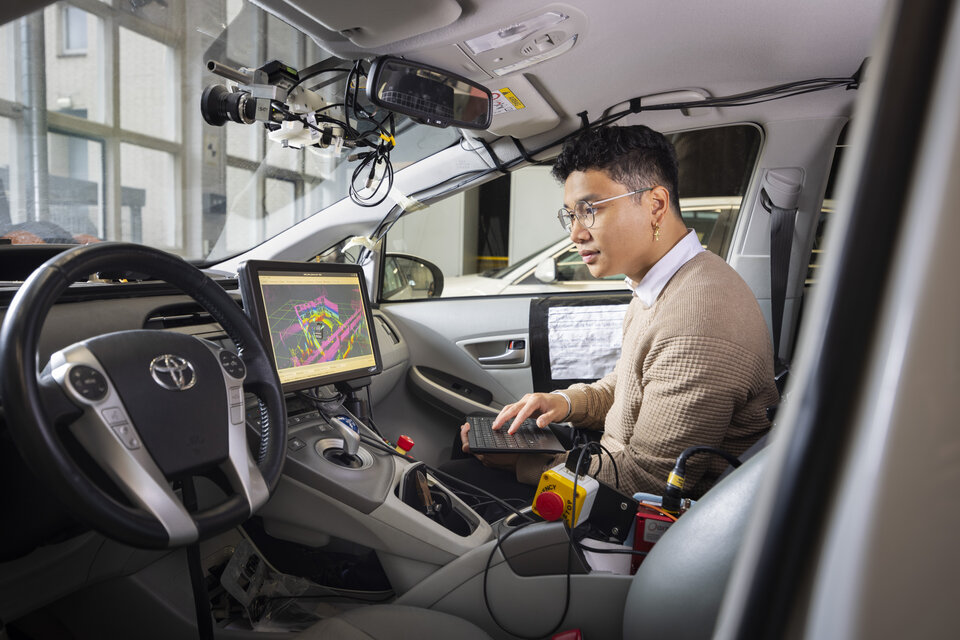It’s surprising, but in the Netherlands – a nation of cyclists – there’s very little data on how cyclists respond to each other in traffic. Yet this data is essential for creating more realistic traffic models, which in turn are key to designing better cycling infrastructure across the Netherlands. Anna Marbus, a master’s student in robotics, wants to change that by causing near collisions with cyclists.
What exactly are you researching?
‘For my thesis, I want to find out more about how cyclists interact with each other in traffic. Specifically, I’m looking at what cyclists do when they cross each other’s paths. For example, we are looking at the speed of cyclists, the distance they keep from each other and when they decide to brake. I’m also interested in what factors cyclists take into account when making their decisions. Basically, we’re doing a kind of behavioural analysis of cyclists.’
Why is that important?
‘The ultimate goal is to make our infrastructure as safe as possible for all road users. My research provides data that can be used to make traffic models more realistic. These models are used to visualise traffic situations. For example, they can be used to predict the consequences of works on a particular road. But these models also help us design our infrastructure. For example, is it safer and more efficient to build a separate cycle path next to an arterial road? You can visualise all these different scenarios and factor them into the final decision. These models are trained using traffic data. Current models focus mainly on cars. To a lesser extent, there is data on the interaction of cyclists with cars and pedestrians with cyclists, but there’s very little data on how cyclists interact with each other. This is mainly because the behaviour of cyclists is difficult to predict.'
This research provides a modest addition to the necessary data on cyclist-cyclist interaction. If we can train the models with more cycling data, the infrastructure can eventually be better adapted to cyclists.
Can you describe your research?
‘Behind the faculty, there’s a special test area that we use for my research. We have two participants get on their bikes at the same time. One has to cycle to point A, and the other to point X. Somewhere along the way, their paths cross. The cyclists know that there’s another cyclist, but they don’t know where the other cyclist is going. To make the data as realistic as possible, I want to hang a screen between the participants so they only see each other at the last moment. This allows us to see how they really respond when they’re forced to react quickly. Essentially, we’re simulating a conflict situation in an open space where there are no traffic rules.’
‘Of course, we’re not using regular bicycles for this. Together with my supervisor, PhD student Christoph Schmidt, I fitted the bikes with a number of additional sensors in addition to the usual ones. These record all kinds of data, such as speed, steering angle, pedalling frequency and GPS position. We’ve also placed a number of cameras around the test site so we can get a good picture of how the riders respond. There are 20 participants in total, and each one performs the experiment 12 times, approaching each other from a different angle each time.’
What do you like best about your research so far?
‘What I really like about this research project is that it has a very practical side. I have already completed another Master’s degree, in Biomechanical Engineering, and there I worked a lot with models. In my experience, a programming task such as this is less tangible. I like the fact that I’m involved from start to finish and can hopefully draw some really useful conclusions and deliver something that Christoph can take forward.’
What was the biggest challenge?
‘That was installing the sensors, ha ha! I’m not very good with my hands and don’t have much experience with electrical engineering, so that was a bit of a challenge. Luckily there are always people in the Bike Lab willing to lend a hand.’
What do you think of the robotics master's programme and what did you get out of your research project?
‘I really like the Master’s programme. I’m very interested in human-machine interaction, so it was a logical choice for me. It’s a challenging course, but you learn a lot. What I like most is that there are many projects. That way, you’re also working practically and can immediately apply your newly acquired knowledge. In my current research, I’ve benefited in particular from the programming skills you acquire during your studies.’
What’s next?
‘With 20 participants running the experiment 12 times each, there’s obviously a lot of data. Over the next few months, I’ll be analysing it all. Eventually I want to build a machine learning model in Python. If I manage to build a regression model, I’ll be able to draw statistically sound conclusions.’
‘At the end of my project, I will hand over my data and conclusions to Christoph. He will actively use this date to improve current traffic models.’




